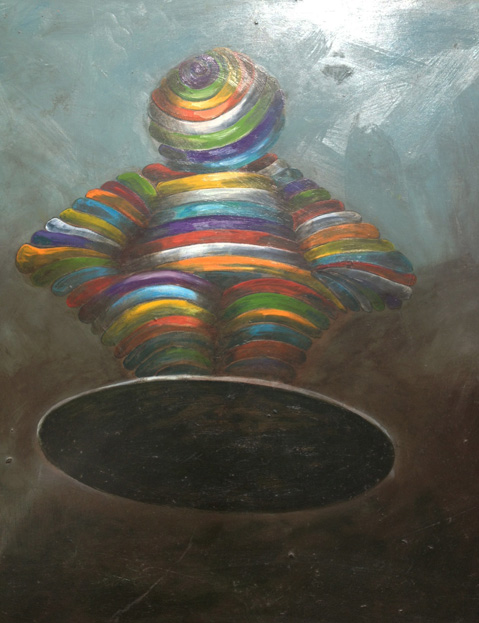Arts Fund 2-D and Kirkegaard Shows
Figurative Painting and More in the Funk Zone
Now that the Funk Zone appears poised for its international art world debut, it’s interesting to speculate on the figure it will cut. It may be possible for an area to break out without a collective identity, but it certainly doesn’t hurt if it has one. Of course these stereotypes oversimplify, but there will always still be certain standard pairings of art world locations and the artists identified with them. Whether that’s analytic cubism and surrealism in early-20th-century Paris, neo-expressionism and the Metro Pictures artists in 1980s Soho, or the East Village in that same era with graffiti, Keith Haring, and Jean-Michel Basquiat, there’s no question that dominant tendencies tend to frame experience.

Two recent shows in the Funk Zone give one potential narrative for identifying the scene there in this still-young decade, and I’ll call it the story of the filtered close-up. The Zone 2-D at the Arts Fund (205C Santa Barbara St.) gathers artists whose studios are within a few blocks of one another in the heart of the neighborhood — Erika Carter, Lindsey Ross, Mike Irwin, Johnny Troyna, and Chris Kirkegaard. And over at Chris Kirkegaard’s frame workshop and gallery (218 Helena Ave.), there’s a related show (Kirkegaard is in both) that brings in Mark Lozano and Philip Koplin, whose work also supports the general feeling of managed vulnerability, even if they aren’t working in Funk Zone studios.
In the 2-D show, Kirkegaard’s painterly approach to the figure, destabilizing perspectives, and idiosyncratic cast of vintage toys sets the agenda, which involves abstracting and alienating personal-seeming objects from their original contexts. When Erika Carter adds an irresistibly lush layer of gloss to her postmodern retablos, or when Lindsey Ross creates eerie associations with her vintage self-portraits in a metal shop, something similar takes place — what’s been visible about the artist all along becomes freshly strange.
The image slippage happens again in Johnny Troyna’s installation when he puts an agreeably biomorphic painting into dialogue with a slick DIY video panel portrait. And Michael Irwin restates the theme of intimate estrangement in his large canvases that marry advanced abstract painting technique to a restricted palette and postmodern/industrial sense of surface. While the objects themselves tend to be original, and to carry evidence of their facture, the visions implied by these pieces all feel as though they were filtered through and altered by the grids and layers of mechanical reproduction.
Over on Helena in Chris Kirkegaard’s space, Mark Lozano and Philip Koplin join in this spirit of establishing closeness at a distance. Koplin is represented by his animal sketches, a highly memorable series of accidental drawings that’s shown to great advantage here.
The real revelations are seven small paintings by Mark Lozano. Lozano renders these deliberately unstudied interiors with the representational technique of a master craftsman and the humility and deliberation of a Buddhist poet. Like Kirkegaard, Lozano is a skilled artisan restorer, and his inspiration stems from a shared vision of Santa Barbara as both part of, and slightly apart from, the immense sea of valuable objects that is the international trade in fine art. In Lozano’s “Smash Puppy,” an ultra-realistic interior comes to an incomprehensible focal point through the representation of an eccentric thrift store picture of a framed stuffed animal. High and low art, things near and far, and feelings personal and impersonal come together in one perfectly balanced moment, and then part to be captured again.



